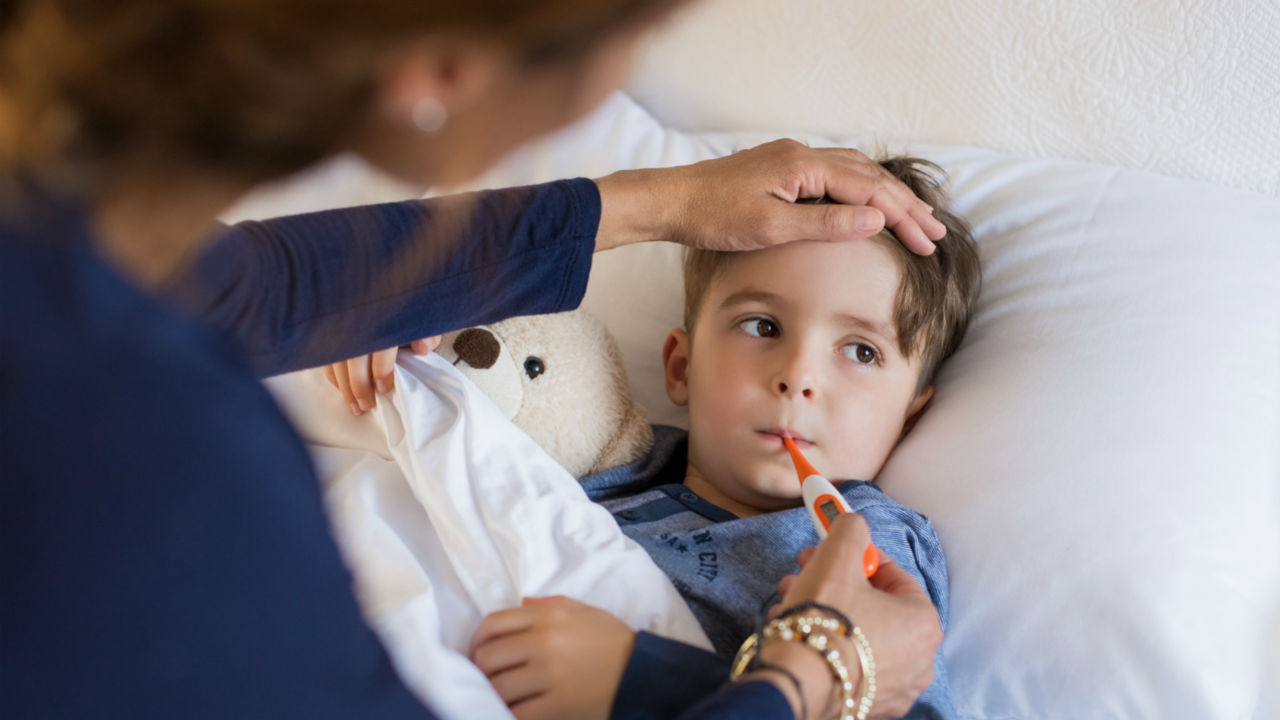Buckle up. This is getting to be a really bumpy ride.
As the H1N1 flu, also known as the swine flu, continues to spread through our schools and workplaces, conflicting information can almost paralyze us. We worry about the safety of the vaccine, especially for our children; but we worry more about the shortage of it. We listen to a sick child’s labored breathing, and wonder if she is better off at home or in the emergency room, surrounded by other sick people. The CDC announces a rise in H1N1 deaths, and all we can do is wash our hands some more.
Here’s a roundup of the situation as it exists today, Nov. 2. If you’ve got other questions that I don’t answer here, please add them in the Comments section below,
and we'll get those answered for you as well.
The CDC update on hospitalizations and deaths:
The Centers for Disease Control updates key flu indicators every week (see first web link, below). At the end of last week, the report noted that deaths associated with H1N1 and pneumonia has been higher than expected for four weeks now. Another 22 children died from the flu this past week, at least 19 of them confirmed to be H1N1. The total since April of pediatric flu deaths is now 126.
Hospitalizations are also higher than normal for this time of year, and the highest hospitalization rate is for children 0-4. And 48 states are reporting widespread flu activity right now – the only two that aren’t are Hawaii and South Carolina.
How do I know if I have H1N1?
There is a self-evaluation available at http://www.flu.gov/evaluation/ . It does not, of course, substitute for a doctor’s visit – what it does is give you an idea of the severity of your symptoms and whether you need to be seen by a doctor immediately. Questions are about fever, cough, chest pain, sore throat, etc. At the end the assessment gives you an idea of the immediacy with which you might need to seek a doctor’s opinion.
Where are the H1N1 flu shots?
If you click on the map at http://www.flu.gov/ you can get the latest information on when vaccines should be available in your area. You just click on your state, and can then click on your county. Each state updates its own status, and there are relavant links to your state’s department of health. And if the most recent report on your state was that it’s “not yet available,” there are phone numbers given for each state hotline. You can call and ask a specific question about your county, your children’s schools, and so on.
Should I take my child to the ER? Or could she get sicker there?
CNN Health has a great story about this (fourth link, below). It discusses overflowing emergency rooms, tents set up in parking lots to act as H1N1 triage centers and waiting rooms filled with flu patients wearing surgical masks to keep from spreading the virus.
You know your child is sick; you don’t want to wait too long to get help. How do you weigh it? Here are some excerpts from the CNN story:
“Experts advise parents be alert for symptoms that develop that are uncommon with influenza. The red flags are:
- rash,
-trouble breathing,
-no urinating in six to eight hours,
-mental disorientation
-or the inability to keep liquids down”
“The children we are worried about are those who have influenza symptoms and chronic disease [neuromuscular, heart disease, lung disease] or kids under the age of 2. Their immune systems can't fight things off as well, and the severity of their symptoms can grow rapidly," says Dr. Anne Stack, clinical chief of emergency medicine at Children's Hospital Boston. These high-risk children often report having trouble breathing. That's because H1N1 virus lowers the lungs' ability to pump out enough oxygen.”
"One thing to not worry too much about is a fever. A fever is one of our body's best defense mechanisms again infection. The H1N1 virus does not like to live at high temperatures, so it is a good protective mechanism," Stack says.
What about Tamiflu?
First of all, don’t buy anything off the internet that suggests it is Tamiflu or that it can cure the swine flu. There are already plenty of scams out there, trying to take advantage of people’s fears. You need a prescription for Tamiflu from your doctor, in a dosage and delivery method (pills vs. liquid form) appropriate for the age of the patient.
Tamiflu can reduce the severity of the flu when it’s started quickly enough after symptoms begin. The capsule form is very available, but the liquid form, which is safer for children, is in such short supply that pharmacies are compounding their own. (This is perfectly safe at a pharmacy that is a “compounding pharmacy.” Compounding in this case means that the pharmacist is mixing the medicine with a liquid syrup approved by the manufacturer.) A USA Today story explains this in the fifth link, below.
You do need a prescription for Tamiflu. Call your doctor’s office ahead of time to see if you need an appointment and, if so, when the waiting room is likely to be least crowded.
Keep track of your child’s school
I visited my sister last week and she has four kids, one in college, one in middle school and two in elementary school. All of them were hyper-aware of which kids in their own schools have the swine flu. But don’t rely on that. My sister called her daughter’s university to ask what the situation is for vaccines for the students there, for instance. (Each university’s health department can request a certain number of vaccines for their student body.) That university’s nurse had requested 500 doses of the vaccine (it is a school of about 900) and had to go through security clearance before the vaccine was sent. (The clearance is because the government is very aware of people who might be trying to get the vaccines to sell them illegally.)
I am pregnant, and frightened about this flu. What is the most important thing for me to know?
That you need to get the vaccine as soon as possible. Because pregnant women’s immune systems are somewhat compromised by carrying a fetus, and because their lung capacity is reduced to accommodate the growing baby, they are at a higher risk even if they have no underlying health conditions. When vaccines are available in your area, you should be among the “at risk” populations (along with young children) allowed to get the vaccines early. If you aren’t sure, call your ob/gyn and ask. Please. This is really important.
So what’s the bottom line here?
Bottom line: The H1N1 flu has pandemic status and has the potential to be very dangerous. If you or a child starts having general flu symptoms, stay home – even if it’s difficult to do – and watch the symptoms carefully. If any of the symptoms listed above starts to show up, call your doctor’s office and ask their advice. If it’s after hours, go to the ER.
In the meantime, when the vaccine becomes available, children, pregnant women, health-care workers and people with underlying medical conditions are first. If you are a healthy adult, please wait until these populations have gone first. You have more immunity than the others do because of your age. (You may still get sick, but you are better able to fight it off.)
And hydration is key. If you get sick, drink plenty of water, chicken broth, ginger ale, Gatorade or other liquids that will help you keep from being dehydrated. If you can’t keep liquids down, seek help.
http://www.cdc.gov/H1n1flu/update.htm
http://www.flu.gov/
http://www.flu.gov/evaluation/
http://www.cnn.com/2009/HEALTH/10/30/h1n1.swine.flu.er.kids/index.html
http://www.usatoday.com/news/health/2009-11-01-tamiflu-demand_N.htm
What other questions do you have? I’ll be glad to get you some solid information. And if you or your child has had H1N1 flu, what advice can you offer to others?






Add a Comment19 Comments
Thank you, Sandra! Great information from experienced moms is the best!
November 3, 2009 - 9:13amThis Comment
I have three children. One had fever/cough/aches for three-four days but is now better and the other two now have very high temperatures (101 & 103). If I send the child who recovered back to school will he infect those around him or is it safe?
November 2, 2009 - 5:41pmThis Comment
Anon,
Great question. And the answer, of course, is a bit complicated.
The CDC says that if a child has been fever-free for 24 hours, they can resume normal activities. However, they continue to "shed" the virus for between 2-8 days after that. "Shedding" the virus doesn't mean the same thing as "being contagious," but it is something to be aware of.
Here's some more information about this:
https://www.empowher.com/community/share/children-can-shed-h1n1-flu-virus-6-8-days-after-fever-cdc-says
I am sure that within your household, you are making sure that the children don't share cups, glasses, silverware, toys or linens, and that they aren't kissing each other on the mouth. It is possible for the flu virus to live on a surface for a few hours, so there is a slight chance of your well child picking up the virus from a surface in the home and -- by touching another student or sharing a book, for instance -- to spread the virus. But it's a much much smaller rate of transmission than it would be normally.
November 3, 2009 - 9:13amThis Comment
Higley Arizona (Phoenix area) teacher died of Swine Flu, confirmed! Died Oct 31 after month long illness forced her out on medical leave. Had asthma as underlying disease, reported. 51 yrs old!!! And it's not cold here yet.....90 degrees plus today!! We have been in widespread area for months.....what is our "Winter" season going to be like for the flu here I wonder. There have been many many cases of deaths here and even a huge outbreak in my own 300 house neighborhood in rural desert area that forced out HOA to please beg people who are ill not to give out Halloween candy or to participate in trick-or-treat events. School based immunizations began today for swine flu along with clinics and grocery store events that were reported this afternoon participation great and 2 hr waits mostly. Kinda hot to wait for 2 hrs if you are in the high risk groups though.
November 2, 2009 - 12:59pmThis Comment
SandraGene,
It's indeed a situation for concern. In October, Dr. Karen Lewis, medical director of the Arizona Department of Health Services Immunization Program, reported that there had been 39 deaths statewide since April. County statistics say that 95 percent of Maricopa County’s flu cases (which is where Phoenix is located) are H1N1.
It's important to remember that children, pregnant women, people with underlying health conditions (such as the Higley teacher's asthma) and health care workers are most vulnerable to this virus. If you're in that category, please make it a priority to get a vaccine.
November 3, 2009 - 9:04amThis Comment
If a child has had a definite diagnosis of swine flu...does that child still need to be vaccinated? or is he/she protected at least for this year?
November 2, 2009 - 12:16pmThis Comment
If you're absolutely certain that it was swine flu -- meaning that the child was tested and the that child's specimen was sent to a lab, analyzed and was determined to be H1N1 -- that child will be immune for this season. In future seasons, the virus may change and require new immunizations. However, experts are still recommending that most people who believe they've had the swine flu still get the vaccine, because flu-strain testing is not being routinely done for those with flu-like illnesses. It's not enough to have had a doctor say it was H1N1; only the lab test is definitive.
November 3, 2009 - 8:57amThis Comment
"Another 22 children died from the flu this past week, at least 19 of them confirmed to be H1N1."
November 2, 2009 - 9:19amHow many of those who died got a flu shot or the nasal mist?
This Comment
Anon,
This is a very good question, and the sources I have checked have not answered this. Since there have been delays and shortages in getting the vaccine manufactured and distributed, the assumption would be that these children hadn't had it, but that's only an assumption. (And sources are mixed on whether children need one or two shots).
What is known is that most people who have died from H1N1 (children and adults) have an underlying medical condition that aggravated the flu symptoms (for instance, asthma or a heart condition.) This may have played the largest role in how their bodies reacted to the virus.
November 3, 2009 - 8:50amThis Comment